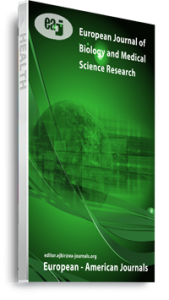The phytochemical screening of Indigofera tinctoria L. (Uri) pod extracts using hot ethanolic, cold ethanolic and aqueous extracts showed the presence of Alkaloids, Flavonoids, Saponins, Tannins and Cardiac glycosides. Alkaloids were present in all the three different extracts, saponins was absent in cold ethanolic extract but present in the others, flavonoids was present in only cold ethanolic extract, cardiac glycosides were present in cold ethanolic and aqueous extract but absent in hot ethanolic extracts. Antimicrobial activity of Soxhlet ethanolic and aqueous extracts in different concentration were used against the following pathogenic bacteria isolates like Escherichia coli, Salmonella typhi, Staphylococcus auerus and Bacillus cereus using Disk diffusion method. The undiluted Soxhlet ethanolic extract showed that S. typhi has the highest zone of inhibition of 25 mm, followed by B. cereus, S. auerus at 11 mm and E. coli having the least zone of inhibition at 8 mm. In undiluted concentration of aqueous extract, B. cereus has the highest zone of inhibition of 11 mm, followed by E. coli at 8 mm, S. auerus at 7 mm and S. typhi at 6 mm being the least. Also in Soxhlet ethanolic extract at dilution 1:1 concentration, the highest zone of inhibition is B. cereus at 10 mm, followed by S. typhi at 7 mm, while there was no zone of inhibition against E. coli and S. auerus. While in aqueous extract at dilution 1:1, B. cereus and S. typhi has the same zone of inhibition of 7 mm and no zone of inhibition was observed against E. coli and S. auerus. Similarly, in Soxlet ethanolic extract of 1:2 dilution concentration, zone of inhibition was observed only on B. cereus as 7 mm and no zone of inhibition was observed in the remaining isolates. For aqueous extract at dilution 1:2, there was no zone of inhibition against all the isolates. Hence the percentage antibacterial activity of both extract indicated that B. cereus with cumulative zone of inhibition of 47 mm has thre highest percentage zone of inhibition at 37.30%, followed by S. typi at 45 mm against 35.71%, S. auerus at 18 mm against 14.29% and E. coli at 16 mm against 12.70% as the least percentage of antibacterial activity. Conversely, same extracts tested against fungal isolate like Aspergillus tereus, did not exhibit antifungal properties. Thus the results obtained from this study suggested that Indigofera tinctoria pod validate the use of undiluted extracts of this species in ethnomedicine and could provide a lead in the treatments of bacterial infections.
Keywords: Antibacteria, Antifungi, Indigofera Tinctoria L. (Uri), Phytochemical, Pods

